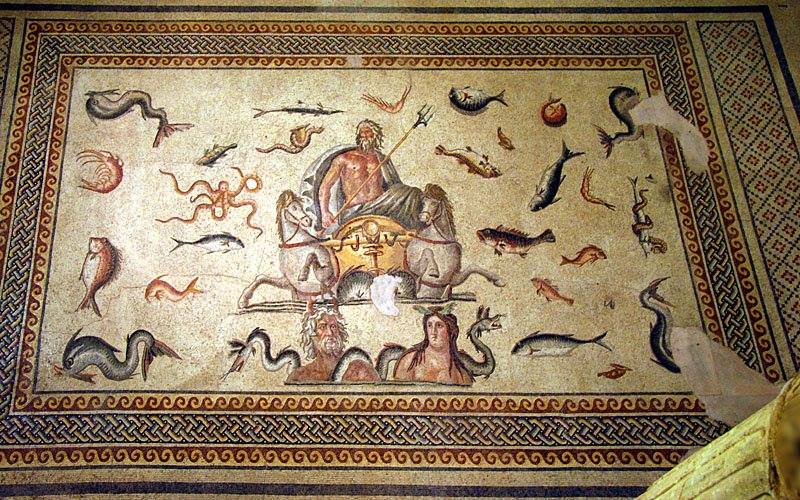Haruspicy
Vegoia authoress
Divination
Theocracy
Etruscan Necropolises
Meaning and Being
 |
| Liver of Piacenza |
The Etruscans were well known for the practice of divining by the entrails of sheep. A bronze sculpture of a liver known as the "Liver of Piacenza", dating to around 100 BC, was discovered in 1877 near the town of Piacenza in northern Italy. It is marked with the name of regions assigned to various deities of Etruscan religion.
The art of haruspicy was taught in the Libri Tagetici, a collection of texts attributed to Tages, a childlike being who figures in Etruscan mythology, and who was discovered in an open field by Tarchon; the Libri Tagetici were translated into Latin and employed in reading omens.
* * *
The Etruscans believed their religion had been revealed to them by seers,[4] the two main ones being Tages, a childlike figure born from tilled land who was immediately gifted with prescience, and Vegoia, a female figure.
The Etruscans believed in intimate contact with divinity.[5] They did nothing without proper consultation with the gods and signs from them.[6] These practices were taken over in total by the Romans.
Tages is also described as a boy with the wisdom of an old man.
 |
| Tages |
Vegoia authoress
The revelations of the prophetess Vegoia are designated as the Libri Vegoici, which included the Libri Fulgurales and part of the Libri Rituales, especially the Libri Fatales.
She is barely designated as a “nymph”, as the actual writer of the Libri Fulgurales,[4] which give the keys to interpreting the meaning of lightning strokes sent by the deities (using a cartography of the sky, which, as a sort of property division, was attributed to Vegoia;[5] this assignment of sectors of the horizon to various deities is paralleled in the microcosm that is the liver of a sacrificed animal. The sacred divisions seem also to have a correspondence in the measurement and division of land, which since the very dawn of Etruscan history obeyed religious rules[6]), as teaching the correct methods of measuring space [7] in the Libri Rituales, and as lording over their observation under threat of some dire woe or malediction,[8] thus establishing her as a power presiding over land property and land property rights, laws and contracts (as distinct of commercial contracts laws).
She is also indicated as having revealed the laws relative to hydraulic works,[9] thus having a special relationship to "tamed" water.
Divination
The Etruscans accepted the inscrutability of their gods' wills. They did not attempt to rationalize or explain divine actions or formulate any doctrines of the gods' intentions. As answer to the problem of ascertaining the divine will, they developed an elaborate system of divination; that is, they believed the gods offer a perpetual stream of signs in the phenomena of daily life, which if read rightly can direct man's affairs. These revelations may not be otherwise understandable and may not be pleasant or easy, but are perilous to doubt.
Theocracy
The Etruscan state government was essentially a theocracy. The government was viewed as being a central authority, over all tribal and clan organizations. It retained the power of life and death; in fact, the gorgon, an ancient symbol of that power, appears as a motif in Etruscan decoration. The adherents to this state power were united by a common religion. Political unity in Etruscan society was the city-state, which was probably the referent of methlum, “district”. Etruscan texts name quite a number of magistrates, without much of a hint as to their function: the camthi, the parnich, the purth, thetamera, the macstrev, and so on. The people were the mech. The chief ruler of a methlum was perhaps a zilach.
Etruscan Necropolises
Some 6,000 tombs, 200 of which include wall paintings. The main site is the Necropolis of Monterozzi, with a large number of tumulus tombs with chambers carved in the rock. The scenes painted include erotic and magic depictions, landscapes, dances and music. There are also carved sarcophagi, some dating to the Hellenistic period. Main tombs included the Tomba della Fustigazione and the Tomb of the Leopards.
 |
| Tomb of the Leopards |
Meaning and Being
Long after the assimilation of the Etruscans, Seneca the Younger said[1] that the difference between the Romans and the Etruscans was:
Whereas we believe lightning to be released as a result of the collision of clouds, they believe that the clouds collide so as to release lightning: for as they attribute all to deity, they are led to believe not that things have a meaning insofar as they occur, but rather that they occur because they must have a meaning.
 |
| Civita di Bagnoregio |


No comments:
Post a Comment